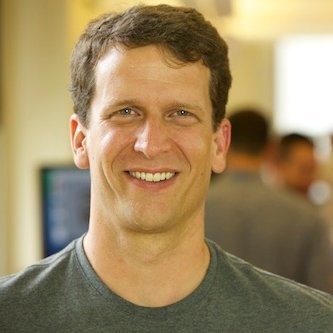Or listen in your favorite podcast app
Apple Podcasts / Google Podcasts / Stitcher
After recently joining Wikimedia Foundation, Grant Ingersoll, the foundation’s CTO, is learning on the job each and every day. As the leader of a 120-person team, his opportunities to gain new knowledge from those around him are never-ending. Grant shares what he has found out so far and how that has helped him grow into his role. Plus, he gives us some insights about what projects he and his team are working on and why he has a deep love for data.
Best Advice: “Any of the listeners out there wondering how you get to be a CTO, I think you’ve got to learn how to communicate. You’ve got to learn how to share ideas. You got to learn how to work with folks who aren’t always technical and meet them where they are and be willing to take inputs.”
Key Takeaways
- Understanding Wikimedia’s knowledge infrastructure
- Wikidata’s innovative way of using data
- CTO responsibilities of the Wikimedia Foundation
Getting started in tech
Grant’s main goal as a kid was to play videogames. This meant when his dad or sister brought home their computers from work or school, Grant was anxious to get his hands on one to try to figure out how he could play the videogames he loved.
Once Grant got to college, though, his goals had changed. He decided he wanted to become a mathematician or an economist and it wasn’t until one day a friend of Grant’s told him to try out a computer programming class that he saw a possible future in the field. He fell in love with programming and maintains his affection to this day.
Grant’s role at Wikimedia
Grant is currently the CTO of the Wikimedia Foundation, which supports all of the various Wiki projects, including Wikipedia.
“We’re really focused on a lot of the backend infrastructure that goes into supporting both the end-user experience as well as the plumbing to make that all run. Within my team, I have site reliability engineers, I have machine learning engineers, I have researchers, we have people who work on the core infrastructure of all of those moving parts that go into the foundation’s website. I have technical evangelists who go out and show people how to take advantage of the open-source that we publish. We have security teams who are working on things like censorship and privacy.”
Why Grant joined the Wikimedia Foundation
Prior to joining the Wikimedia Foundation, Grant had started a company called Lucidworks. After 12 years with the company, Grant was still enjoying the work he was doing, specifically in search, machine learning, and natural language processing and working on the problem of helping people better understand information. However, when an email popped up into his inbox from a recruiter at the Wikimedia Foundation, Grant saw an opportunity he couldn’t turn down. The scope of the technology and the work he could do with Wikimedia dwarfed just about all other avenues he could have explored.
“The combination of the sheer size and scope of the technology of Wikimedia Foundation, combined with the mission and then this amazing community of volunteers who contribute so much so that the rest of us have this incredible resource.”
Under the hood of the Wikimedia Foundation
At its core, the Wikimedia Foundation is a nonprofit that does everything to help service its community. Grant talks about this service in detail, which he and his team call the “Knowledge Infrastructure.”
“It’s things like search engines, machine learning tools, dev-ops pipelines, data pipelines and, the plumbing and infrastructure of a knowledge infrastructure. I have both strategic and technical responsibilities of helping set and the longterm vision around technology l.”
“We look a lot at the technical aspects of security, but we also dig into a lot on the social aspects given the fact that we support a large community of actual people. We take their security and privacy very seriously. We want to make sure that people who want to contribute can freely contribute. We want to make sure that people who want to read and consume our content can freely do that as well. And so that means we’re constantly evaluating the security and privacy aspects of the platform.”
Wikidata
The Wikimedia Foundation started what’s known as, “Wikidata,” which was formed around 2014. Wikidata focuses on capturing and sharing structured data.
“How do we help people find and explore the full space of knowledge? How do we help them have a more complete understanding of a particular topic? A lot of times our readers are coming in and getting these little snackable pieces of information. And so what if we could then link them to other things, show them the possibility of, ‘Hey, you started at this particular factor, this particular article, but here are all the other things that you didn’t know about this thing that is related.’”
“If you want to play around with our databases, our search engine, you want to do some analytics on our data sets, we give out resources for you to do that.”
Mentions:
- Donate to the Wikimedia Foundation
- Tetris
- Lucidworks
- Develomentor
- Wikipedia Random Page of the Day





